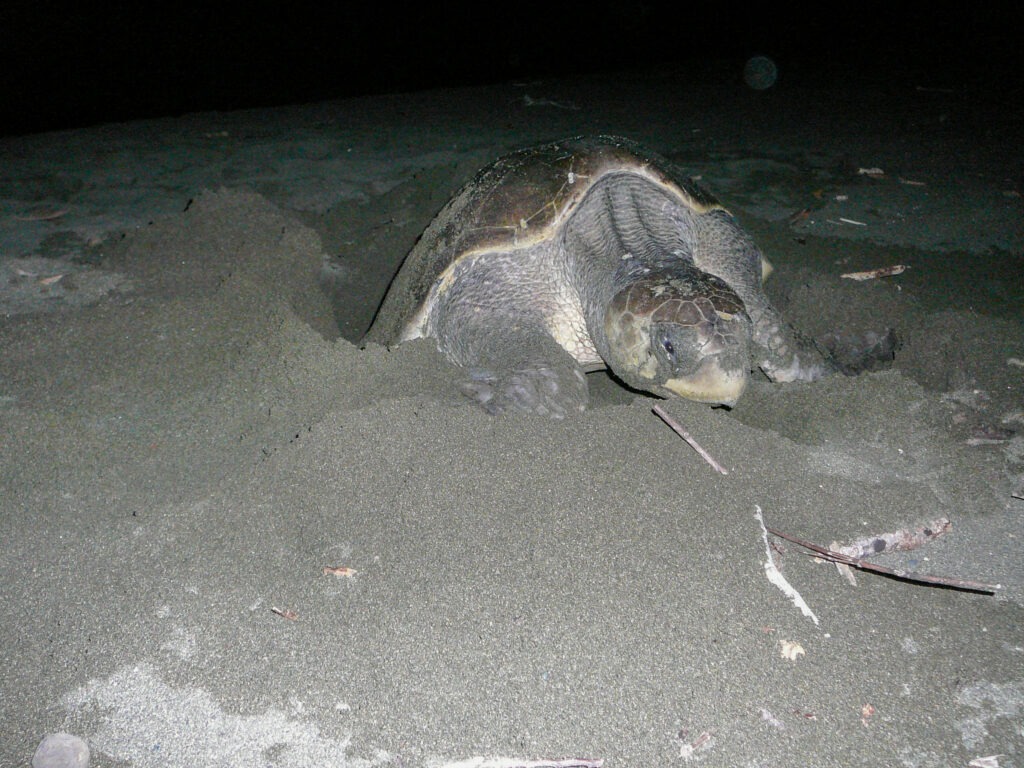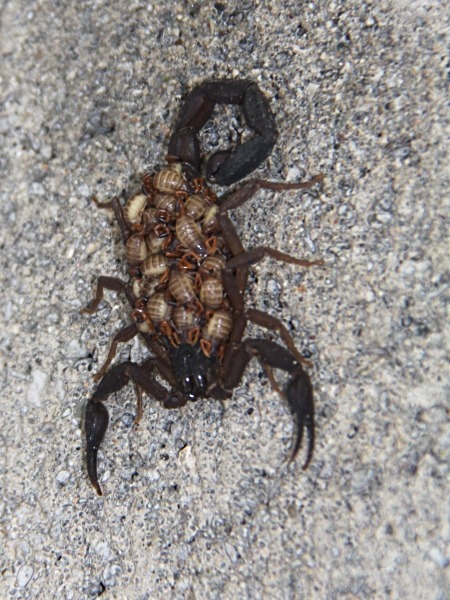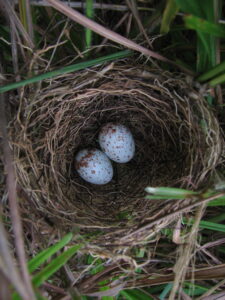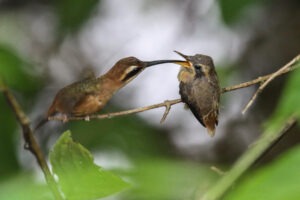Month's Subject: Parental care
To care or not to care?
Some animals take more care than others
There are many ways to ensure offspring. One extreme is to put all your energy in producing as many offspring as you can and spend no energy on caring for them. Sea turtles, for example, lay their eggs on a suitable beach, but do not look after them. Once laid, the eggs and hatchlings are on their own. Many sea fish species go even further. During the mating season, females and males swim close together and both release their eggs or sperm at the same time to ensure fertilization. Sometimes several males try to push each other out of the way to get as close to the spawning female as possible. Often, many males and females form a mating school with all individual fish releasing their eggs or sperm at the same time. The fertilized eggs float away with the currents, become part of the plankton.
In fish, as with the sea turtles, mortality among eggs and young is high, but since hundreds, thousands or sometimes millions of eggs are produced, enough will survive to become adult fish or turtles.
In most of these species the females are larger than the males, because producing eggs takes more energy than producing sperm. Fish and reptiles continue growing throughout their life (but at a much slower rate when they are adult) and the bigger the animal gets, the more eggs or sperm they produce. Therefore older (and presumably fitter) individuals contribute more to the next generation than younger individuals.

Arthropods
Arthropods are not usually associated with parental care, but some species do. Scorpions and wolf spiders will carry their young on their back for a few days to weeks and protect them, Ants and bees, of course, rear their young inside the nest/hive and feed and protect the larvae until they emerge as adults. Interestingly, it is the workers that determine how many fertile offspring the colony produces. Workers will kill and eat what they regard as superfluous queens and drones.

Birds and Mammals
Birds and mammals are well known for their parental care. But even here there are different strategies. Many birds in the tropics lay only two or three eggs, but smaller birds do that for a very different reason than larger birds. In smaller birds, nest predation is a big problem and birds therefore do not invest all their efforts in one clutch. If the clutch is lost to a predator, the birds start again.
In large birds, like macaws and eagles, the number of eggs is limited so that parents can spend all their effort on a few offspring. Even then, most of the time only one chick survives. In raptors, one egg hatches a few days earlier than the other and that chick is larger and will take most of the food brought to the nest by parents. As long as enough food is available, both chicks will survive and grow. But when a food shortage happens, due to inclement weather, the younger chick often dies and is eaten by the larger chick. The younger chick basically functions ans a living fridge for the older one.
Prompt List
To be completed…




